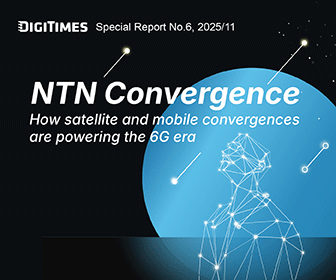In recent years, the popularity of sodium-ion batteries has suddenly risen. Chinese companies such as Contemporary Amperex Technology (CATL), Gotion Hi-Tech, EVE Energy and BYD are all engaging in researching sodium-ion batteries. CATL is even about to put them into mass production. Here are some analyses of sodium-ion batteries.
Three reasons why sodium-ion batteries become attractive
First, the price of lithium raw materials, especially battery-grade lithium carbonate, has been erratic for the last several years, and the future trend is not easy to grasp. More than 70% of China's lithium is imported, and the pricing power is controlled by enterprises in the producing countries. So for carmakers, it is necessary to find a replacement product within reach.
Second, the basic principle of sodium-lithium batteries is the same as that of lithium-ion batteries. Most of the existing technical systems of lithium-ion batteries can be translated to sodium-lithium batteries. Of course, some barriers need to be overcome. Relatively speaking, the technical cost of this implementation is lower than the cost and time-consuming of developing a brand-new battery.
Third, the current shortages of lithium batteries seem to be completely circumvented or overcome by sodium-lithium batteries. Considering the technical feasibility and cost difference comprehensively, so, instead of sticking to lithium-ion batteries, it's better to go the other way.
Lithium-ion and sodium-ion batteries can be said to be twin brothers. They both have the same gene and belong to the "rocking chair battery." They both rely on a metal ion to shuttle back and forth between the cathode and anode. As early as the 1970s, the two batteries were invented simultaneously. However, in the later stage of industrial development, the sodium-lithium battery did not find a suitable cathode material, and the reason why the research conditions were not mature was indifferent. But on the contrary, lithium-ion batteries have achieved technological breakthroughs in cathode and anode materials, separators film, and electrolytes. It was commercialized by Sony in 1991. So far, it can be said that lithium-ion batteries have completed the development of the essential technical system, people have figured out many technical details, and with the processing production, and packaging technologies of batteries, these are relatively mature. In other words, in this way, the rest is to replace lithium ions with sodium ions, right? Yes, but the batteries you make in this way cannot be used to drive electric vehicles alone.
The possibility of sodium-lithium batteries replacing lithium-ion ones: A discussion from seven directions
First: The absolute advantage of sodium ions is cost. From the perspective of raw materials for anodes, the recent price of lithium carbonate is US$570,000/ton, while the price of sodium carbonate is less than US$3,000/ton. This is not only a world of difference. Moreover, because sodium salt has better conductivity, the concentration of the electrolyte can be reduced, which also reduces the cost. Besides, this type of battery contains metal salts, the anode of the lithium-ion battery is aluminum, and the cathode is copper. The electric-current collector is used to connect the active materials to gather current, so why use copper for the cathode of lithium-ion batteries? Because lithium ions will react with copper to form alloys but sodium ions will not, so aluminum can be used for both the cathode and anode of sodium-ion batteries and the cost can be further lowered. If sodium-ion batteries can achieve the same performance as lithium-ion batteries, the price of electric vehicles should be reduced by about 50%. In this way, lithium resources no longer have the opportunity to monopolize and raise prices.
Second: Sodium-ion batteries are not simply replacing basic lithium ions. There are relatively large changes in the cathode and anode materials. In terms of anode materials, there are three types similar to lithium-ion battery anode materials.
Type I is a layered transition metal oxide, which is similar to the so-called unitary, binary, ternary lithium compounds in lithium-ion batteries, such as nickel-cobalt lithium manganese oxide, etc. The transition elements used include manganese, nickel, chromium, iron, titanium, vanadium, etc. But it is not the same as lithium cobaltate. The unitary sodium ion, the single-layer metal oxide sodium, is not stable; it must be doped with other metals to form a stable structure. Currently, a UK company uses Mn-Ni-Ti-Mg quaternary layered structure as the anode material with an energy density of 160Wh/kg. A China enterprise adopts a three-component solution of Cu-Fe-Mn, and the energy density can reach 135Wh/kg.
Type II anode material is the Prussian white compound, which is a transition metal hexacyanoferrate – NaxMa[Mb(CN)6], Ma={Fe, Mn, Ni}, Mb={Fe, Mn }. The crystalline structure is relatively open, which is more conducive to the intercalation and extraction of sodium ions, but its stability and cycle performance still need to be improved due to some side effects. CATL has put a lot of effort into this material, and the battery energy density of the newly developed material has reached 160Kw/kg after testing.
Type III is an anionic compound, NaXMy[(XOm)n-]z, where M is a metal ion of variable valence such as iron, vanadium, etc., and X is an element such as phosphor and sulfur. This material presents a three-dimensional network structure, high operating voltage, and good cycle performance but relatively low energy density.
The above three cathode materials have their advantages and disadvantages, and all manufacturers are researching them. It is still unclear which one will become mainstream in the end.
Third: Regarding the cathode material, the cathode material of lithium-ion batteries is graphite, and sodium ions cannot be embedded in graphite due to their large size. If graphite is to be used, the interlayer distance of graphite must be increased. This will increase the manufacturing cost and reduce the structural stability of the cathode. The key point is that the feasibility of this technology is limited. Now it is believed that the best cathode material for sodium ions is amorphous carbon. It is an isomer of carbon, with the same carbon component but a different structure. There are two kinds of amorphous carbon, which are hard carbon (difficult to graphitize carbon material) and soft carbon (easy to graphitize carbon material). Hard carbon is recognized as the best cathode material, and its unit energy density in sodium ions battery is relatively high at about 200-450mAh/g, a performance which is comparable to the energy density of graphite in lithium-ion batteries (which is 375 mAh/g). But its price is very high at around US$100,000-200,000/t. This is a key point for cost optimization when sodium-ion batteries are popularized.
Fourth: The electrolytes of sodium-ion and lithium-ion batteries are similar. Both use organic solutions of carbonate ester, but the electrolytes are different. Sodium-ion batteries can use sodium hexafluorophosphate, similar to lithium-ion batteries using lithium hexafluorophosphate. However, due to some technical and environmental issues, the industry is promoting the non-fluorination of electrolytes, and sodium-ion batteries can use lower-cost sodium perchlorate.
Sodium perchlorate has also been regarded as the standard salt for sodium-lithium-ion batteries and is very cheap, which is very suitable for large-scale energy storage applications. However, because perchlorate is a strong oxidizing agent, dissolving in organic substances will produce a strong chemical reaction, so neither sodium perchlorate nor lithium perchlorate has become the first choice for electrolytes.
Fifth: Regarding the performance of sodium-ion batteries, it has no over-discharge problem and can theoretically be discharged to zero volts. Lithium-ion batteries cannot be fully discharged. If lithium ions are completely extracted, the interlayer structure of the cathode graphite may collapse and affect the secondary insertion of lithium ions. Besides, the low-temperature performance of sodium-ion batteries is far superior to that of lithium-ion batteries. It still maintains a power supply retention rate of more than 90% at -20 degrees and still has a retention rate of more than 70% at -40 degrees. In winter, the problem of electric vehicles' inability to cruise will no longer be seen.
Sixth: As mentioned earlier, the conductivity of sodium-lithium-ion batteries is higher, and the diffusion capacity of sodium ions is also stronger, which means that its C-rate is better. The sodium-ion battery has at least a 3C charge-discharge rate, so if a sodium-ion battery is used, the power output of the battery will be stronger, and the charging speed will be faster. However, energy density is a key factor. Although the cost is low, the energy density is also low; therefore in order to achieve the same cruise ability, it may be necessary to add a few more modules. This is easy to understand; we don't need to analyze the material properties of the anode and cathode. We only need to look at the data of the sodium element itself on the periodic table for understanding. Sodium is the 11th element with an atomic weight of 22.9g/mole, and it can only carry one charge in a redox reaction, compared with the lithium element of 6.9g/mole to carry a charge, which is not dominant. Referring to the actual products, it can be seen that the current energy density of sodium-ion batteries is generally around 100-150Wh/kg, while that of lithium-ion batteries is 120-180Wh/kg. There is still a gap between them, and this gap is still difficult to match. However, with the development of anode materials, the energy density of sodium-ion batteries will continue to increase. If they can achieve the same level as lithium iron phosphate batteries, I think they are qualified to independently drive electric vehicles.
Seventh: The future strategy of some manufacturers is to integrate sodium-ion batteries with lithium-ion batteries to form a hybrid battery to indirectly reduce the cost of lithium-ion batteries. Therefore, we should still worry about completely using sodium-ion batteries to drive vehicles. Next, to consider the safety performance, the internal resistance of sodium-ion batteries is relatively high. When encountering a short circuit, the instantaneous heat generation is smaller than that of lithium ions, and the temperature rises slowly, so it is relatively safe. In addition, lithium dendrites, an important safety consideration of ion batteries, are relatively less important in sodium-ion batteries, because the probability of dendrites generated by sodium-lithium ions is relatively low, so it can further enhance safety. However, if the metal sodium element is reduced on the cathode and encounters water, it will also cause a fire and explosion. In a word, it is only relatively safe.
The cycle performance is not sure yet. Judging from the current relatively mature products, the cycle life of sodium-ion batteries is lower than that of lithium-ion batteries, which has a lot to do with their technical stability. However, there are also corresponding technical solutions that can make the cycle life reach more than 4,000 times, but these are just some solutions that have not been commercialized.
Generally speaking, in the research of anode, cathode materials, and electrolytes of sodium-lithium batteries, there are still many barriers that need to be overcome. Of course, this difficulty is mainly reflected in the use of power batteries. If it is large-scale energy storage, cost considerations are the priority. At this time, its competitors are lead-acid batteries instead of lithium-ion batteries.
Conclusion: Performance takes priority
My conclusion is relatively pessimistic. I don't think sodium-ion batteries can replace lithium-ion batteries in electric cars alone or storage facilities for replacing lead-acid batteries. At most, it is a means of reducing cost, and it can be used in conjunction with lithium-ion batteries to reduce the cost of the entire battery pack.
An important point of view is that the core of the competition between power batteries must be performance rather than cost. It must be performance first and then cost reduction, rather than reducing cost first and then improving performance. Giving up performance just for cost is putting the cart before the horse.
Editor's Note: "Doctor Steel" Jin-Luh Mou, specializes in Earth and Environmental Sciences. He has been involved in the steel industry for 33 years and is familiar with steel-making. After retiring in 2020, he resumed his study for a second doctorate at National Tsing Hua University. He is currently the consultant for Phoneix Battery Corporation.

Credit: Dr. Jin-Luh Mou




